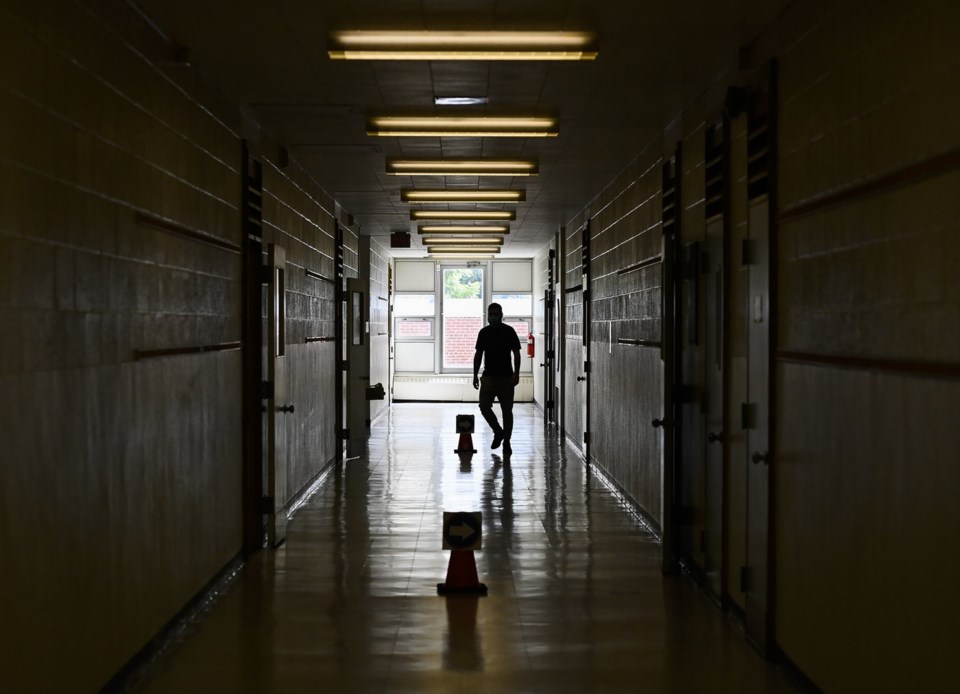TORONTO — It would cost Ontario $31.4 billion over 10 years to clear a backlog of school repair needs, build enough new spaces to address growth and maintain all schools in a state of good repair, but the government's current plan falls far short of that, according to a report Tuesday from the province's fiscal watchdog.
The Financial Accountability Office wrote in a report that the provincial government's 10-year capital plan allocates $18.7 billion for school buildings, resulting in a shortfall of $12.7 billion.
Education Minister Jill Dunlop wrote in a statement that the province has doubled the funding to build and expand schools and cut construction timelines in half.
"We have done our part to invest and cut red tape for school boards to build and we need them to do their part and use the public tax dollars to get shovels in the ground faster," she wrote.
"We are meeting the needs of growing communities with 240 new schools under construction that will create 81,000 pupil spaces in the coming years."
Financial accountability officer Jeffrey Novak's report estimated that about 37 per cent of schools in the province are below a state of good repair, and 32 schools should be replaced entirely.
NDP Leader Marit Stiles said when school buildings fall into disrepair, it leads to negative impacts on students.
"It means leaky roofs," she said. "It means classrooms that hit freezing temperatures in the winter and stifling heat in the summer. It means asbestos in our walls and lead in our drinking water, and students learning in portables that should have been replaced decades ago. It is unacceptable."
The FAO report said most schools are under full capacity, with hundreds of schools operating with fewer than 60 per cent of the maximum number of students.
Boards have been urging the government to lift a school closure moratorium put in place in 2017, saying that seven years later it is putting a strain on their budgets and resources.
The Ontario Public School Boards' Association said in a statement that schools are critical public infrastructure and governments must invest properly in them.
“Just like the government is significantly investing in the growth and maintenance of highway and residential infrastructure to support Ontario's economy, so too must it invest in school growth and maintenance," the association wrote.
The FAO also said about 1,400 schools were over capacity, and that looking at projected enrolment growth, the equivalent of 227 new schools will need to be built over the next 10 years.
Liberal Leader Bonnie Crombie said a $12.7-billion shortfall is a "complete failure."
"This funding isn’t even about improving our schools - it’s just the bare minimum to keep them safe and functional," she wrote in a statement.
"That’s $12.7 billion less for our kids’ learning environments. Parents trust our schools to deliver for their children, and we need to invest in them to ensure that trust isn’t misplaced."
The report also sets out details on the 10 largest school boards, and found that the Toronto District School Board has the highest amount of schools below a good state of repair, at 84 per cent.
That aligns with findings in the Ontario auditor general's recent annual report, which concluded that TDSB buildings are on average in the worst condition among Ontario school boards.
In response, TDSB said it is developing a long-term capital plan with the goal of improving facility conditions. However, the board said the school closure moratorium affects its ability to effectively manage a long-term capital plan, as there is the risk of doing significant work in buildings that should be closed. As well, older buildings are more costly to operate, the board said.
This report by The Canadian Press was first published Dec. 17, 2024.
Allison Jones, The Canadian Press



